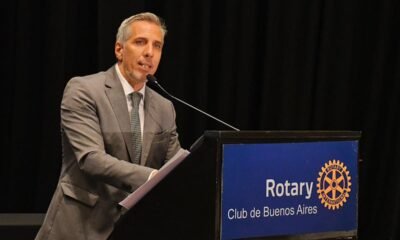INTERNACIONAL
Reporter’s Notebook: A Paris jewel heist straight out of the movies
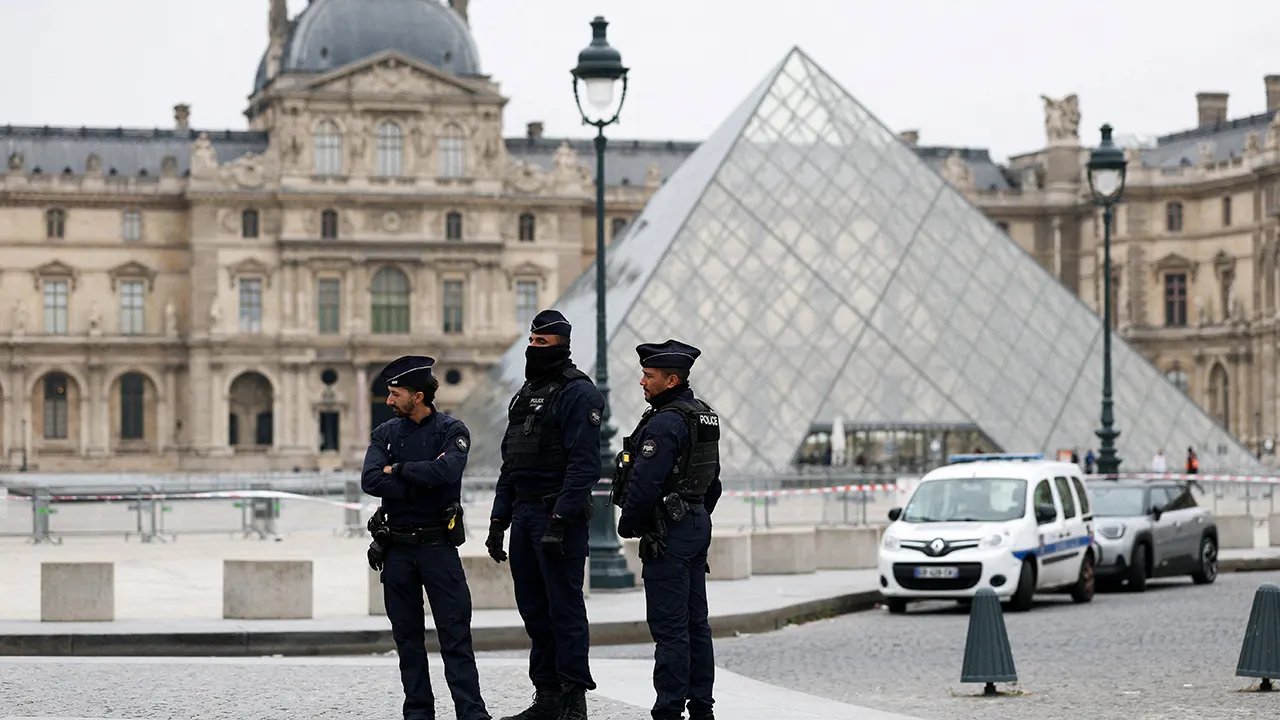
NEWYou can now listen to Fox News articles!
Sometimes you get assigned stories that are different enough to make even veteran journalists raise their eyebrows. Sunday’s jewel heist at the Louvre in Paris is definitely one of them.
Four guys, using a cherry picker truck to scale the side of the museum, break through a second-floor window, scoop up to $100 million worth of French crown jewelry, and make off with the loot on motor scooters in under 10 minutes. Something out of the movies. Pink Panther. You name it.
I used to live in Paris. I’ve covered many front-page stories during my time there and after — from the death of Princess Diana to several deadly terror attacks, and the fire at Notre Dame Cathedral. Now, this.
‘BRAZEN’ LOUVRE THIEVES MADE TARGETED HEIST, JEWELS COULD BE MELTED DOWN: EXPERT
Fox News senior foreign affairs correspondent Greg Palkot reports live in front of the Louvre Museum entrance in Paris on Oct. 21, 2025. (Fox News)
Luckily, I had an ace team with me: professional cameraman and producer John Templeton and Simon Owen, seasoned Paris producer since the 1990s, Cicely Medintzeff, and a handy big Mercedes van and driver
The trip didn’t start that well — losing a few production bags on the flight from London to Paris. But cameraman John made do. As we chatted with folks at the airport, including a nice American couple from Washington state. The robbery was already the talk of the town.
Our next challenge was finding a spot to do our live shots. Arriving by night, the road near the museum was blocked by police on one side, so we ended up backing our way in on the other side. We found a place in front of the iconic pyramid-shaped entrance to the museum. Night or day, it’s one of the great backdrops around — as we talked about a terrible crime.
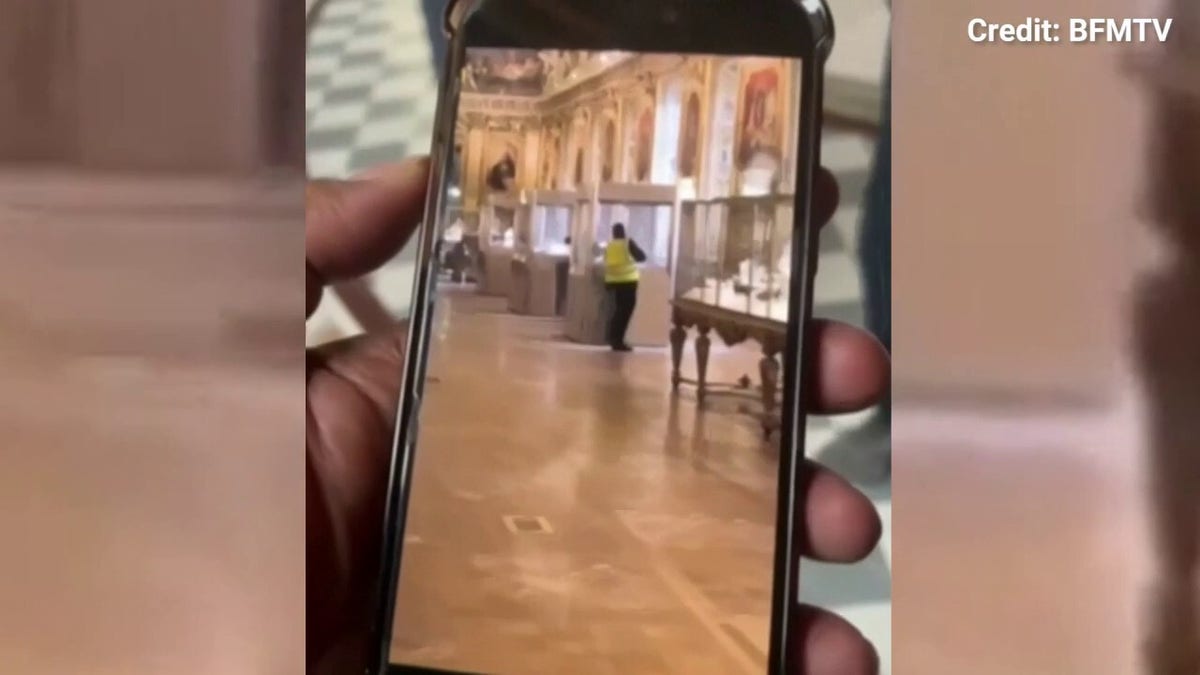
New footage purportedly shows a person in a yellow jacket beside a display case amid the Louvre heist. (BFMTV)
The next morning, we went straight to the scene of the crime — the back side of the museum. We saw the narrow sidewalk where the thieves parked their truck, the flimsy window they cut through, and a piece of wood now covering the gap. Except for a parked police car, even at that time, there wasn’t a lot of security around. There was no museum video of the break-in. The crooks beat the alarms.
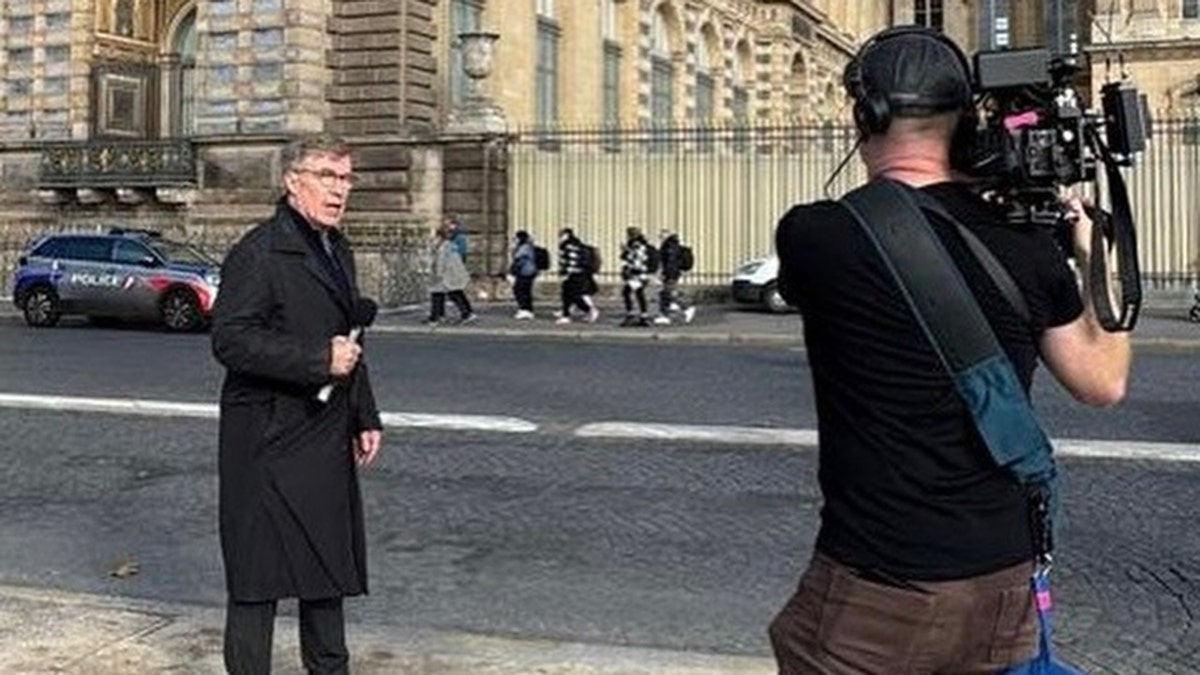
Fox News senior foreign affairs correspondent Greg Palkot stands outside the Louvre Museum, where a break-in occurred, in Paris on Oct. 21, 2025. (Fox News)
LOUVRE MUSEUM CLOSED AFTER ROBBERY, FRENCH OFFICIAL SAYS
We weren’t the only ones gawking. A small crowd, including American tourists, stared up and wondered. «It looks incredibly easy,» one told us. «Weird,» another sighed.
But the big crowds were back in front of the museum. Even though it was closed that day (it had been shut following the robbery), throngs were there — many wondering about the crime. Many more just taking the usual Instagram-style selfies with the Louvre.
With our TV equipment spread on the pavement for live shots, we became another source of attention. «Where did it happen?» one person asked. «When is the museum opening again?» asked another. One more American tourist came up and described how he and his wife had been to the museum the day before the robbery and could already tell the security was terrible.
LOUVRE DIRECTOR GRILLED ON SPECTACULAR SECURITY FAILURES, INCLUDING CAMERA POINTING AWAY FROM KEY BALCONY
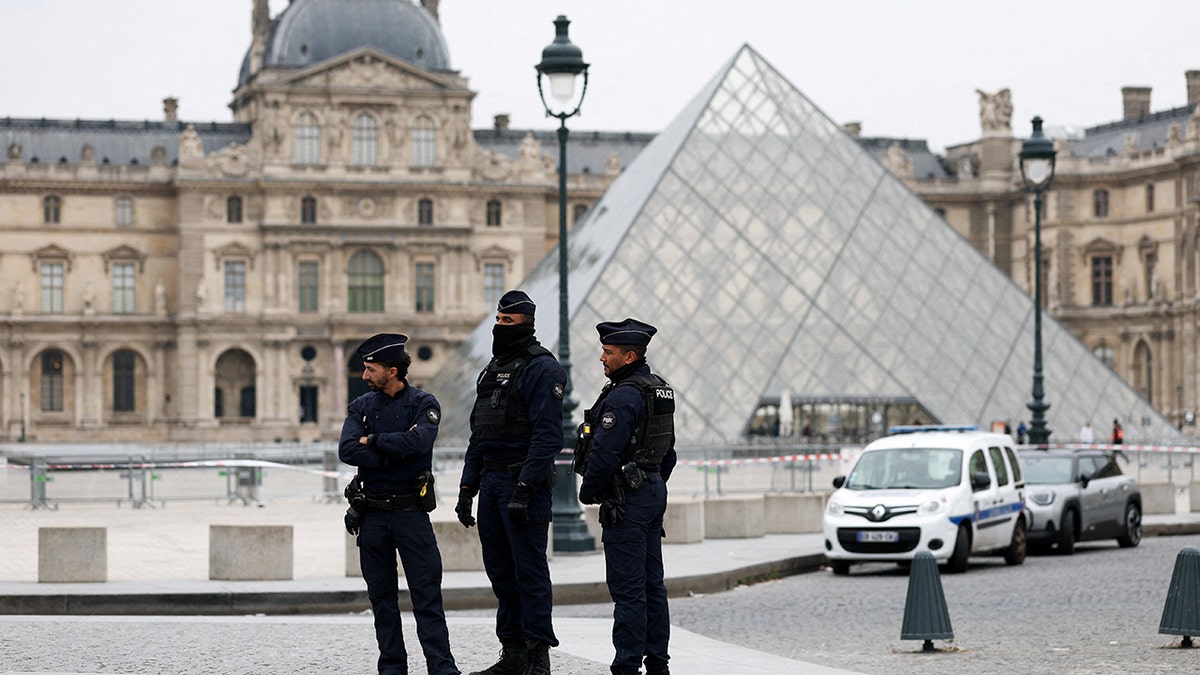
Police officers stand near the pyramid of the Louvre museum after reports of a robbery, in Paris, France, October 19, 2025. REUTERS/Gonzalo Fuentes TPX IMAGES OF THE DAY (Gonzalo Fuentes/Reuters)
As more details of the crime emerged, the story only got stranger. How the thieves picked up their truck just 25 miles outside Paris. How were they in such a rush they left behind a crown studded with more than 1,300 diamonds (they got eight other pieces). And how Police — making up for lost time — gathered evidence, including a construction-style vest, a glove, a license plate and video of the suspects making their getaway on a highway outside Paris.
And the French were doing another thing they’re good at — finger-pointing and blame-casting. President Emmanuel Macron has enough political headaches these days. The last thing he needed was a high-profile catastrophe. He promised the culprits would be caught. To her credit, the director of the museum offered her resignation (it was declined) but got a good grilling by the French Senate.
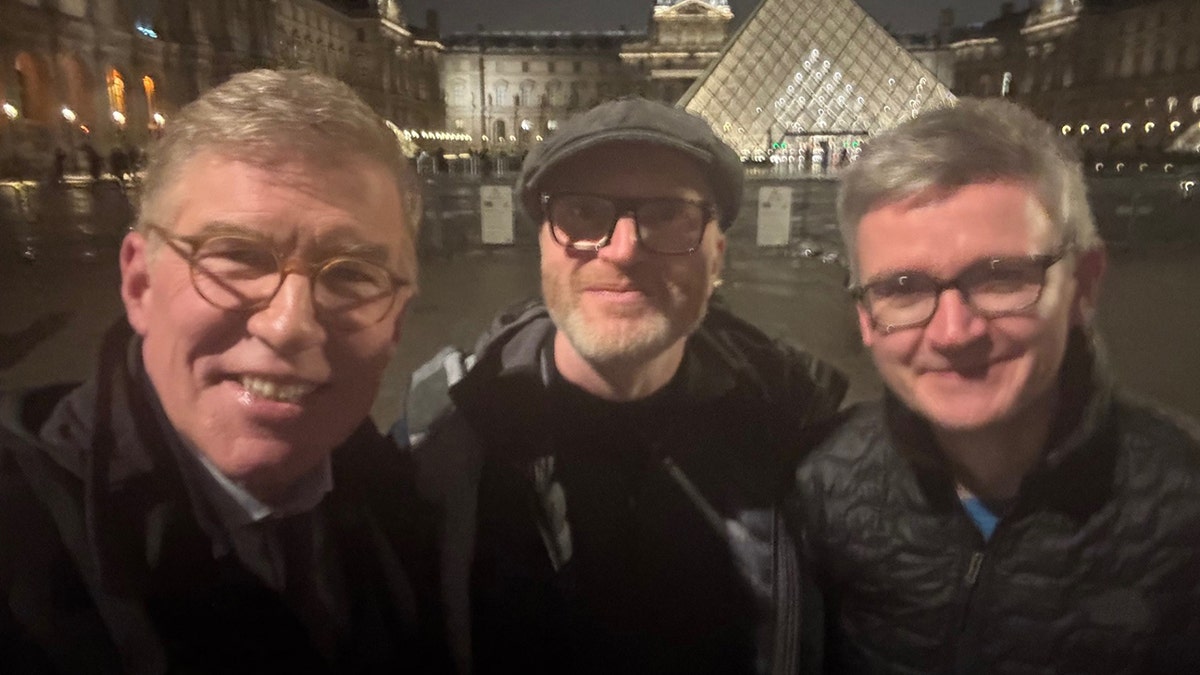
Fox News team, from left, Greg Palkot, cameraman John Templeton and producer Simon Owen, at the Louvre in Paris on Oct. 21, 2025. (Fox News)
All of this, as we noted, was a race against time for a team of 100 French police investigators — one of the biggest manhunts in French history — to catch the thieves before they had a chance to break up the jewelry, re-cut the gems and melt down the gold and silver to be sold off. Part of a growing trend of museum heists.
CLICK HERE TO DOWNLOAD THE FOX NEWS APP
In addition to hearing my on-air colleagues express their astonishment about the crime, we also took our share of ribbing about the «tough» assignment of being sent to Paris. And, indeed, it was lovely seeing my old hometown again. Paris is stunning. But I also must note, aside from a fine brasserie wrap dinner, the trip was more about crowding onto café chairs to write scripts and use facilities — plus Uber Eats, French style.

Fox News senior foreign affairs correspondent Greg Palkot with Paris producer Cicely Medintzeff at the Louvre in Paris on Oct. 21, 2025. (Fox News)
So now we wait to see how this incredible French crime caper pans out. Most people we heard from were pretty sure the bandits would get caught and the museum’s security would be updated. But they had their doubts that the priceless jewelry — described as France’s «soul» — would ever be retrieved. The Louvre has reopened. Let’s just hope this film-style story has a happy ending.
france,crime,europe,emmanuel macron
INTERNACIONAL
Robo al Louvre: hallan 150 pruebas de ADN y logran rastrear la ruta que tomaron los ladrones
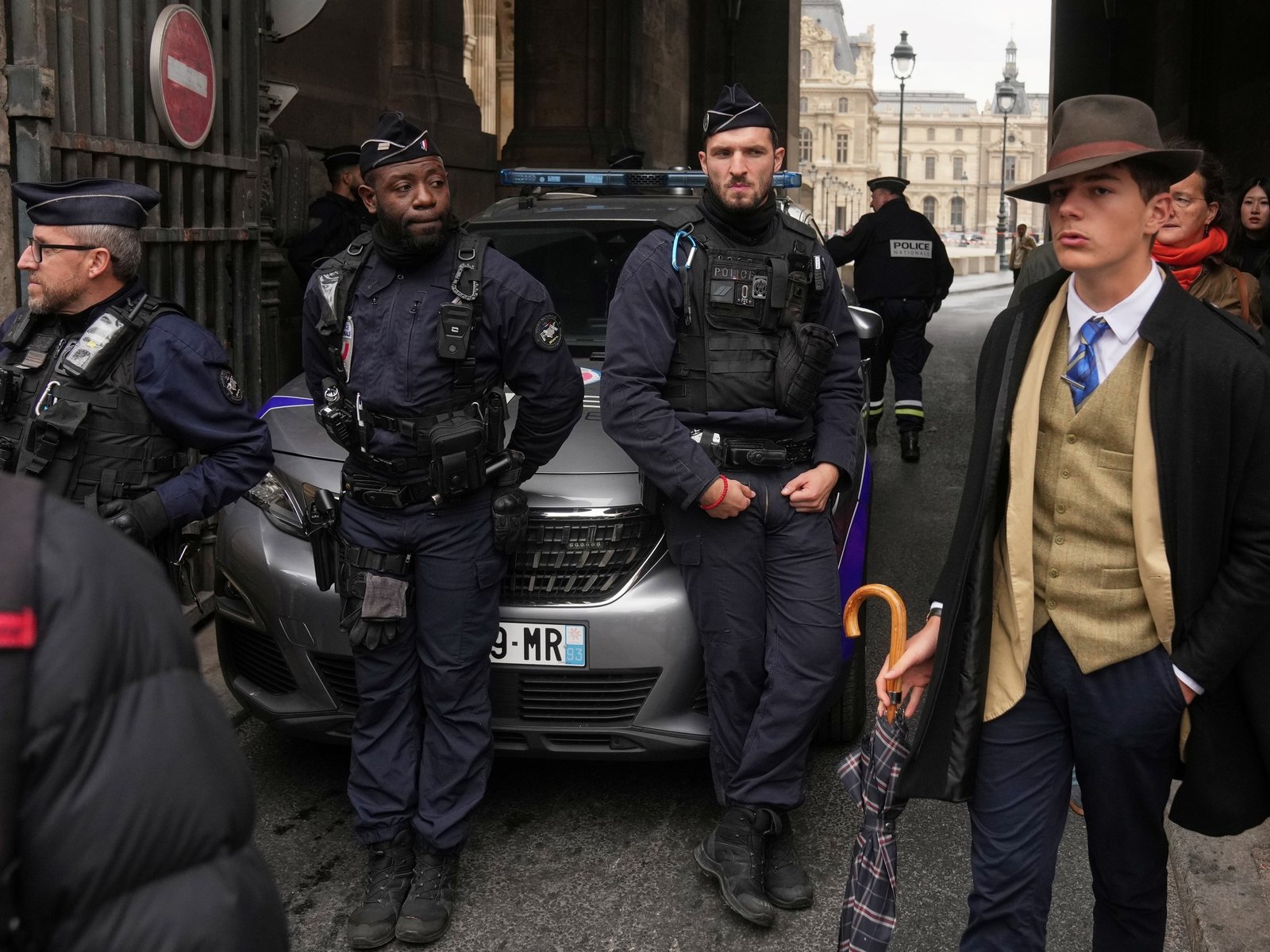
Un ruido enorme
¿Un robo con plan frustrado?
Demasiados robos en el museo
INTERNACIONAL
US kills 6 suspected narco-terrorists in overnight strike on alleged drug smuggling boat, Hegseth says
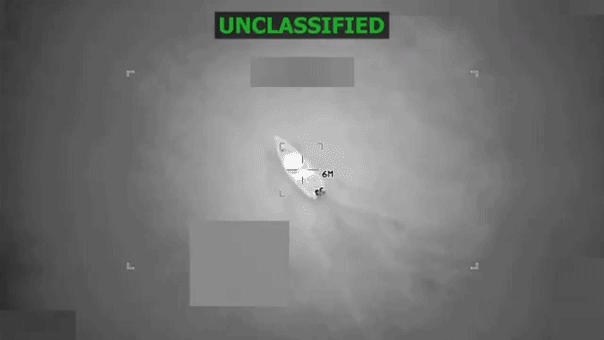
NEWYou can now listen to Fox News articles!
President Donald Trump directed a nighttime U.S. strike on a suspected Tren de Aragua vessel in the Caribbean Sea, killing six alleged narco-terrorists, officials say.
«Overnight, at the direction of President Trump, the Department of War carried out a lethal kinetic strike on a vessel operated by Tren de Aragua (TdA), a Designated Terrorist Organization (DTO), trafficking narcotics in the Caribbean Sea,» War Secretary Pete Hegseth announced on X sharing an accompanying video of the strike. «The vessel was known by our intelligence to be involved in illicit narcotics smuggling, was transiting along a known narco-trafficking route, and carrying narcotics.»
«Six male narco-terrorists were aboard the vessel during the strike, which was conducted in international waters — and was the first strike at night,» he said. «All six terrorists were killed and no U.S. forces were harmed in this strike.»
HEGSETH SAYS US CONDUCTED ANOTHER STRIKE IN EASTERN PACIFIC TARGETING ALLEGED NARCO-TRAFFICKERS
This infrared image released by the Department of War shows a suspected Tren de Aragua vessel in international waters of the Caribbean Sea before a U.S. nighttime strike that killed six alleged narco-terrorists, officials said. (Department of War/Pete Hegseth)
Hegseth further warned, «If you are a narco-terrorist smuggling drugs in our hemisphere, we will treat you like we treat [al Qaeda]. Day or NIGHT, we will map your networks, track your people, hunt you down, and kill you.»
The strike marks the 10th operation targeting suspected drug traffickers since Trump returned to office. The president has made combating the nation’s drug crisis a central policy focus.
The first strike took place on Sept. 2, and since then, 43 suspected drug traffickers have been killed and two have survived, officials said. The pace of the strikes has increased from one every few weeks in September to three so far this week.
The operations have mostly targeted vessels linked to Venezuela’s Tren de Aragua network. The missions have ranged from attacks on smuggling boats to the destruction of a submersible, with footage of several operations released by Hegseth and Trump on social media.
TRUMP APPROVES MILITARY ACTION AGAINST LATIN AMERICAN CARTELS CLASSIFIED AS TERRORIST ORGANIZATIONS
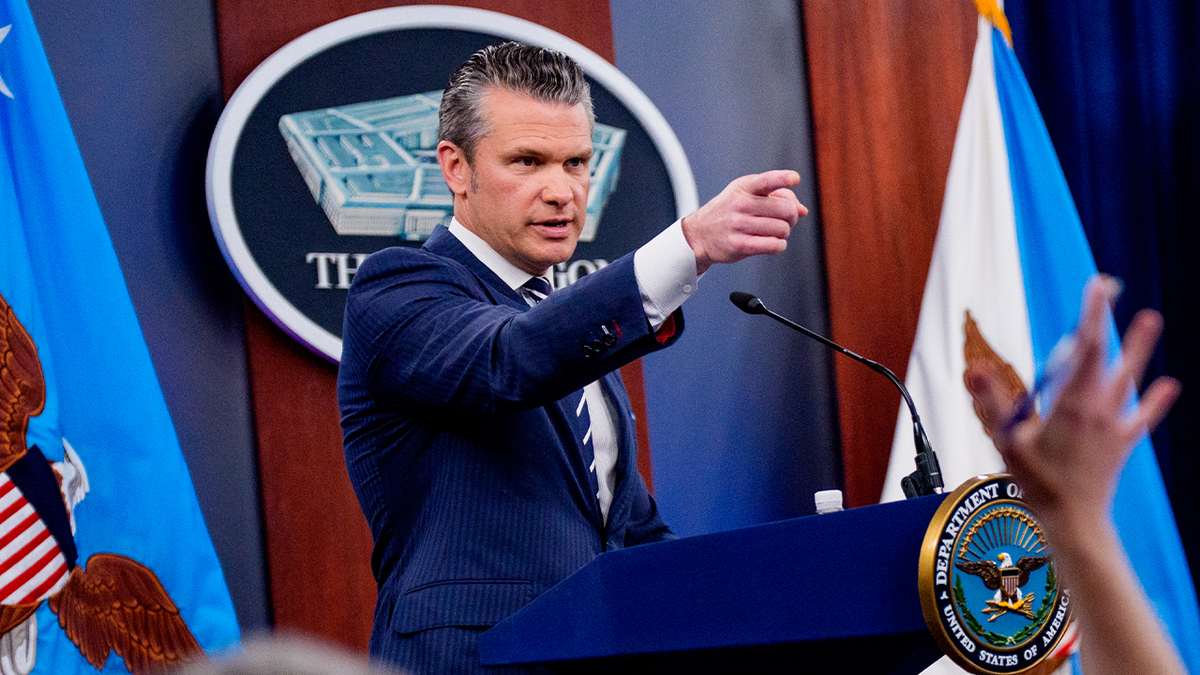
War Secretary Pete Hegseth announced the latest strike Friday morning. (Andrew Harnik/Getty Images )
When reporters asked Trump on Thursday whether he would request Congress issue a declaration of war against the cartels, he said that wasn’t the plan.
«I think we’re just going to kill people that are bringing drugs into our country, OK? We’re going to kill them, you know? They’re going to be like, dead,» Trump said during a roundtable at the White House with homeland security officials.
Trump this month declared drug cartels to be unlawful combatants and said the U.S. was in an «armed conflict» with them.
Members of Congress from both sides of the aisle are questioning Trump’s decision to launch the operations without first consulting lawmakers. Several Democrats are warning that the strikes could breach international law.
Sen. Rand Paul, R-Ky., has also raised concerns about killing people without due process and the possibility of killing innocent people.
CLICK HERE TO GET THE FOX NEWS APP
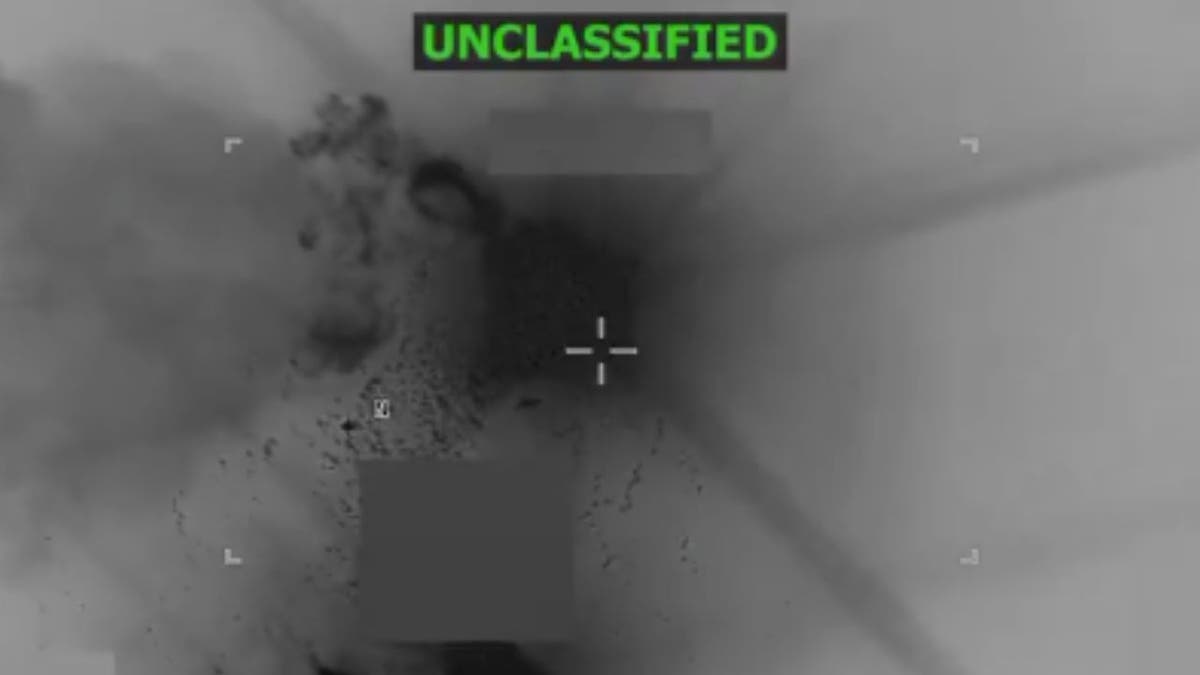
An infrared image released by the Department of War shows debris and smoke following a nighttime strike on a suspected Tren de Aragua vessel in international waters of the Caribbean Sea. Officials said six alleged narco-terrorists were killed in the operation. (Department of War)
In a recent interview, Paul cited Coast Guard statistics that show a significant percentage of boats boarded for suspicion of drug trafficking are innocent.
The senator has also argued that if the administration plans to engage in a war with Venezuela, as it has targeted boats in recent weeks it claims are transporting drugs for the Venezuela-linked Tren de Aragua gang, it must seek a declaration of war from Congress.
Fox News’ Landon Mion and The Associated Press contributed to this report.
narco terror,military,pete hegseth,donald trump,secretary of defense,world,drugs
INTERNACIONAL
Trump’s beef import plan ignores key issue squeezing American cattle ranchers
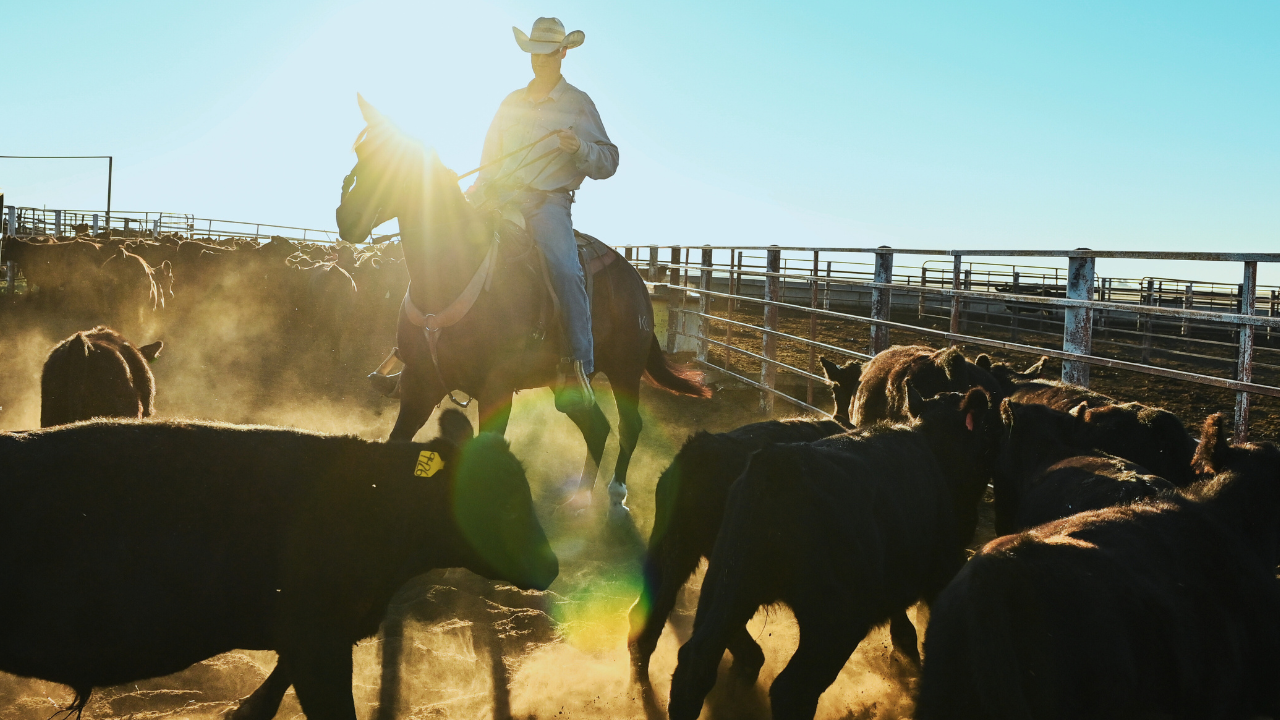
NEWYou can now listen to Fox News articles!
While President Donald Trump’s proposal to import more beef from Argentina is billed by the administration as a way to bring down prices for American consumers, critics say it misses the real issue driving costs at the grocery store: corporate concentration in the U.S. meatpacking industry.
Four corporations — Tyson, JBS, Cargill and National Beef — anchor the U.S. beef supply chain, with pricing power that reaches from pasture to plate. As a result, the gap between what producers are paid for cattle and what consumers spend on beef has remained wide, a reflection, economists say, of how market power is distributed along the supply chain.
Fox News Digital reached out to all four companies for comment but did not receive a response as of publication.
TRUMP ADMIN EYES ARGENTINE BEEF IMPORTS AS DOMESTIC PRICES SOAR TO RECORD HIGHS
Some critics argue the real problem isn’t about supply, it’s the corporate giants controlling America’s meat industry. (Melina Mara/The Washington Post/Getty Images)
The frustration extends beyond farm country – Rep. Thomas Massie, R-Ky., says the dominance of multinational meatpackers is hurting both producers and consumers.
«Four corporations control 85% of the meat sold in the United States. One of these corporations is Chinese-owned and one is Brazilian-owned. American farmers are being squeezed and American consumers are being gouged,» Massie told Fox News Digital.
Massie, who raises cattle on his Kentucky ranch, warned that expanding beef imports from Argentina would only worsen those structural problems.
«Flooding the market with Argentinian beef is not the answer to these problems. An America First solution to rising beef prices is to pass my PRIME Act, which would empower American farmers to sell directly to consumers without interference from global corporate middlemen,» Massie said.
Under current federal law, beef processed at small, state-inspected facilities can’t be sold across state lines, even if it meets the same health standards as federally inspected meat. Massie’s PRIME Act would remove that barrier, a change supporters say would let local ranchers reach more consumers and compete with the big packers.
GOP LAWMAKERS WARN TRUMP’S ARGENTINA BEEF PROPOSAL COULD RATTLE US RANCHERS
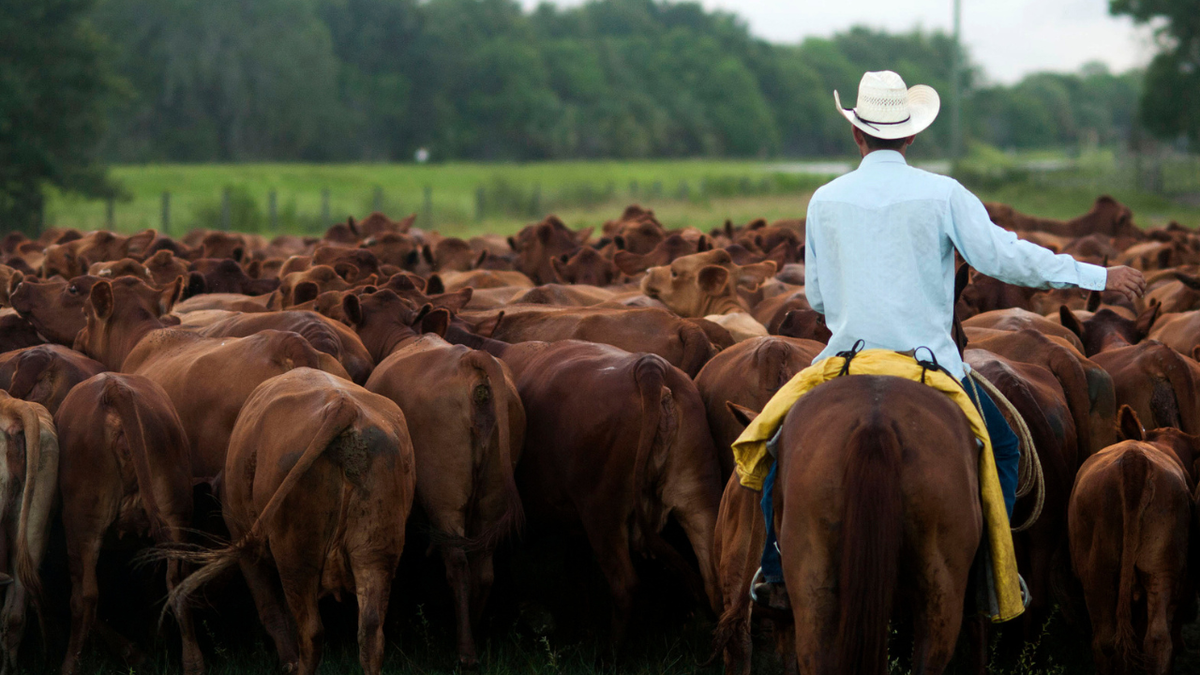
Agriculture Secretary Brooke Rollins recently unveiled a plan aimed at strengthening the U.S. cattle industry. (Ty Wright/Bloomberg/Getty Images)
Economists agree the beef market is highly consolidated, but say the forces shaping prices go well beyond any one trade deal.
Glynn Tonsor, a professor of agricultural economics at Kansas State University, told Fox News Digital that strong consumer demand continues to drive beef prices higher, regardless of supply fluctuations.
«There’s nothing that forces me or you or anybody else when we go into the grocery store to pay more for beef. People are choosing to,» he said. «The consumer desire for beef is strong and, regardless of the supply-side situation, that has the effect of pulling prices up.»
He also noted that the large-scale structure of the U.S. meatpacking industry, often criticized by ranchers and lawmakers, has economic benefits for consumers.
«I would argue that those economies of scale benefit consumers,» Tonsor said. «The ability to operate at a cheaper cost per head and, ultimately, per pound produced gives us the ability to offer beef and every other item we’re talking about at a cheaper price. Anything we do that loses those economies of scale actually hurts consumers in the form of higher prices.»
FROM CATTLE TO CRUDE: HOW TRUMP’S TARIFFS ARE RATTLING THE LONE STAR STATE
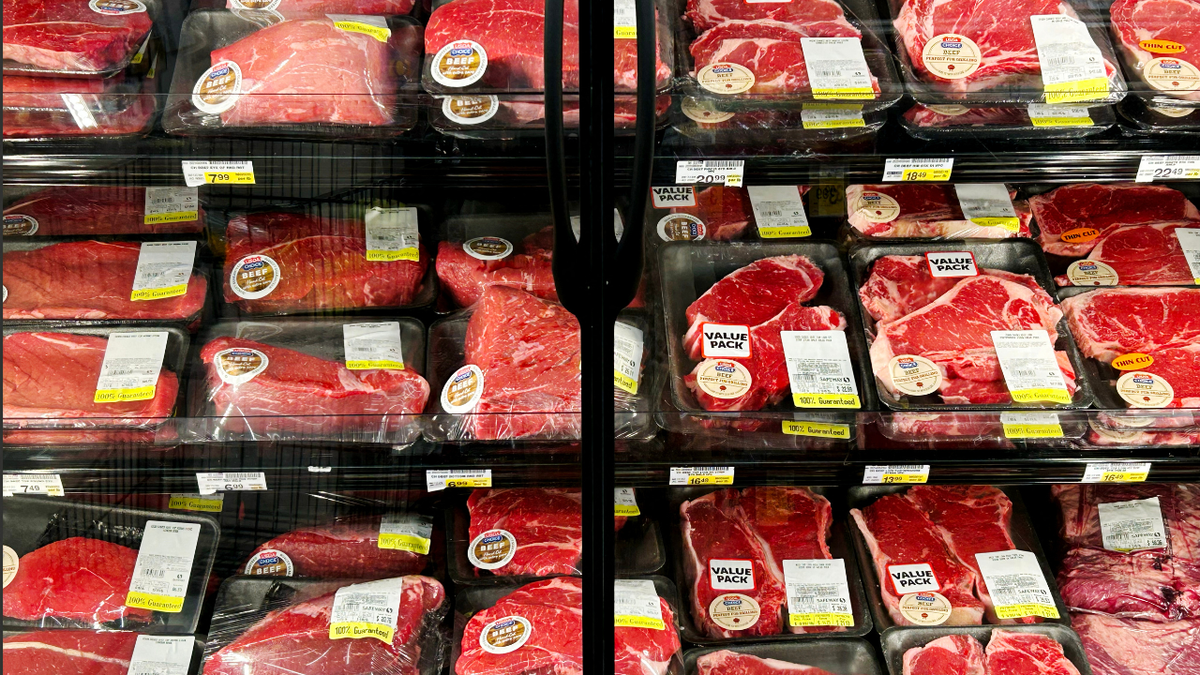
The White House has previously said that importing beef will help address the rising food costs in the U.S. (Jim Watson/AFP/Getty Images)
Derrell Peel, a professor of agricultural economics at Oklahoma State University, said that even if U.S. imports from Argentina increase, the impact on overall prices would be negligible.
«Most of what we import is lean, processed beef trimmings used for ground beef,» said Peel, who specializes in livestock marketing. «We’re not talking about the kind of beef that affects steak prices. Even if we doubled imports, it would be such a small share of the total supply that we wouldn’t detect any real impact.»
Peel added that there’s no quick way to ease pressure on cattle prices, since it takes roughly two years to bring animals to market and several years to rebuild herds.
«The fact of the matter is there’s really nothing anybody can do to change this very quickly,» he said. «We’re in a tight supply situation that took several years to develop, and it’ll take several years to get out of it.»
BEEF PRICES HIT RECORD HIGHS AS NATIONWIDE CATTLE INVENTORY DROPS TO LOWEST LEVEL IN 70 YEARS
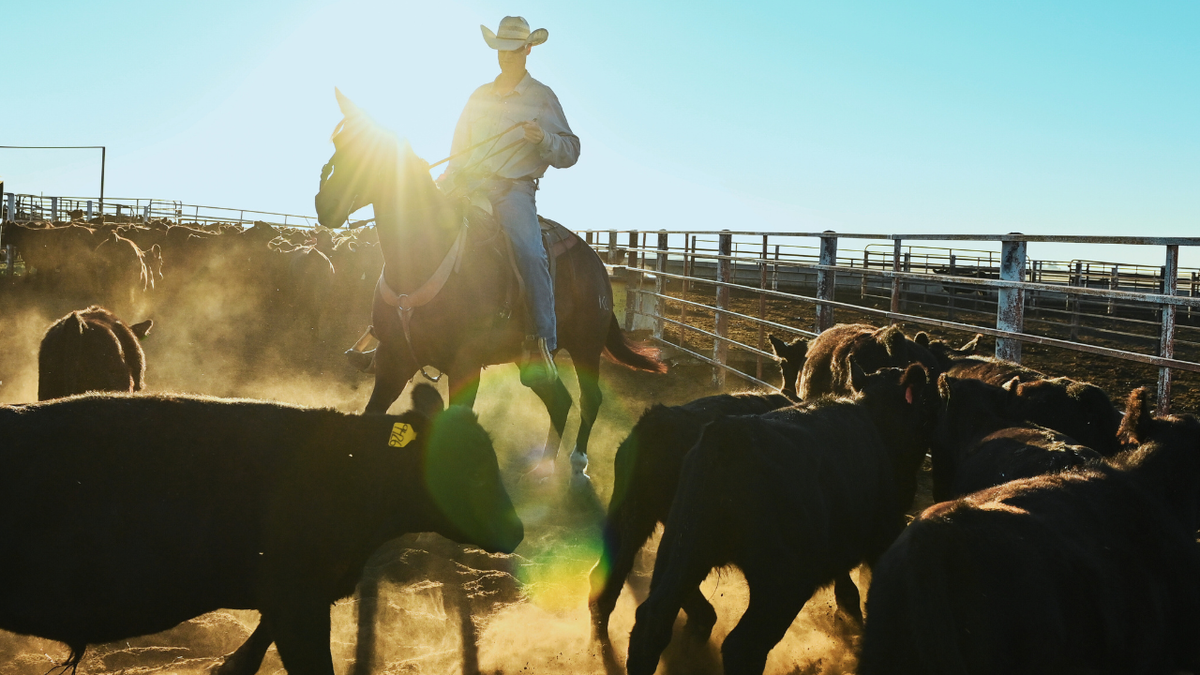
Economists say there’s no quick way to ease pressure on cattle prices or beef. (Ricky Carioti/The Washington Post/Getty Images)
CLICK HERE TO GET THE FOX NEWS APP
Meanwhile, the White House defended the plan, saying it’s aimed at balancing relief for consumers with long-term support for U.S. cattle producers.
«The president loves our ranchers, and he also loves American consumers, and he wants to do right by both,» White House press secretary Karoline Leavitt said on Wednesday.
Leavitt said Trump’s immediate goal is to lower beef prices by increasing supply through additional imports, while a separate, long-term plan will focus on strengthening the domestic cattle industry.
She pointed to a three-part plan announced by Agriculture Secretary Brooke Rollins, which includes expanding grazing access, easing regulations for new ranchers, cutting inspection costs and improving «Product of USA» labeling to ensure consumers know when they’re buying American-made beef.
trade,texas,finance global economy,south america,white house,republicans elections

 DEPORTE2 días ago
DEPORTE2 días agoUniversidad de Chile vs. Lanús, por la Copa Sudamericana: día, horario y cómo verlo por TV

 CHIMENTOS2 días ago
CHIMENTOS2 días agoAdabel Guerrero confesó de qué famosa está enamorada y que le encantaría tener relaciones: «La China Suárez me sorprendió con su belleza»

 POLITICA2 días ago
POLITICA2 días agoDiego Luciani, sobre la condena a Cristina Kirchner: “No hay sentencia ejemplar sin recuperar lo robado”


























